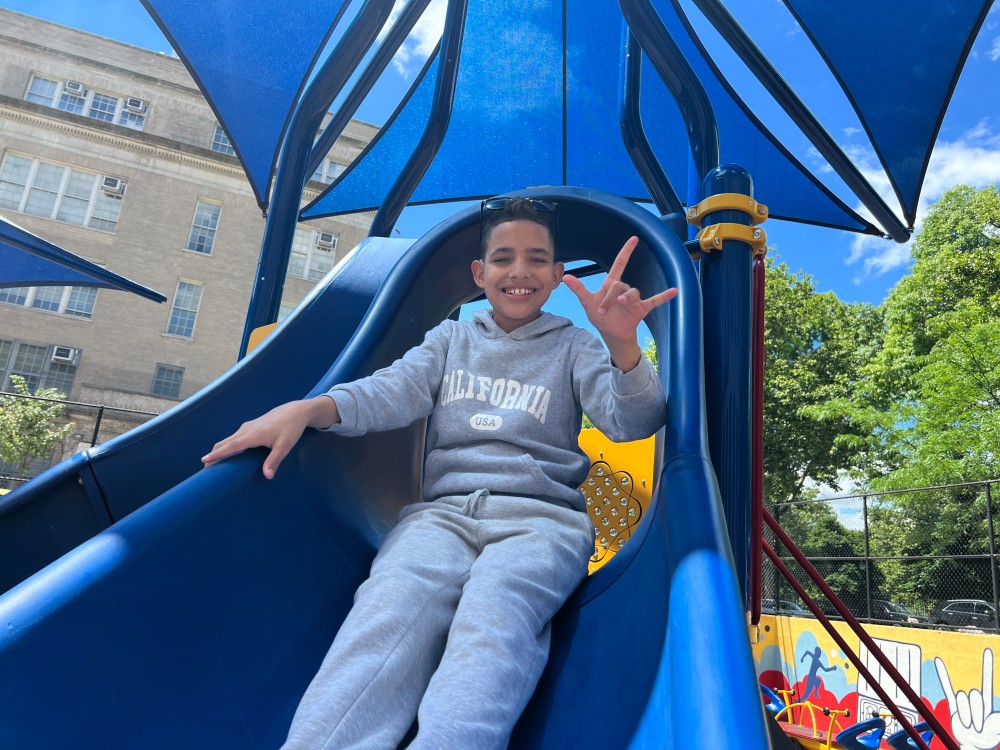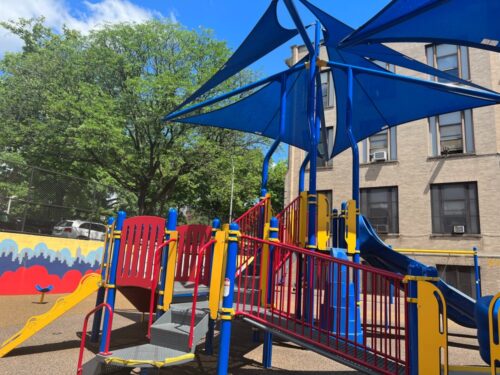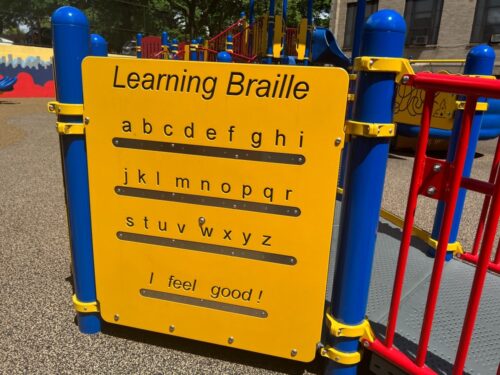
CROWN HEIGHTS — Since she took over as executive director of St. Francis de Sales School for the Deaf, Jodi Falk has had a vision. When she peered through the back doors into the area used for recess and looked at the equipment in place for play, she knew that the school could do more.
Five years later, and thanks to support from the Mother Cabrini Health Foundation and other benefactors, the school has done just that. Instead of a small set of swings and other basic equipment, the approximately 70 deaf, deaf-blind, and deaf-disabled students now have access to a state-of-the-art playground.
Completed in March at a cost of around $700,000, it is specifically designed to support the students’ needs, from the colors to the materials selected for the shiny new play equipment.
“This is a safe place for our children to play, where they don’t have those opportunities in their neighborhoods,” Falk said.
The playground consists of a new swingset, a long ramp, spinning equipment, climbing structures, and slides, incorporating the different ways that the students communicate — American Sign Language, Braille, via photos, and with the help of iPads.
Amir Sonura, an eighth grade student, loves the new playground. His favorite part is the spinning, carousel-style equipment. It’s a lot more fun than before, he says, noting there was basically just a slide for him to play on.
“I like that I can sit down and relax, and enjoy the breeze,” Amir said.
It has been painted in yellow, red, and blue, but not just because those are the school’s colors. They also serve as guides for the students.

The blue and yellow areas are where the students stop and play, while the red areas are walking zones. Some of the students experience color loss, and red is one of the most visible colors for those with the disability.
It’s been part of the strategic vision of the school to become state-of-the-art, Falk said, from its programming to its classrooms. As it slowly works toward that goal, it now has visitors from as far away as Europe coming to see the work being done for their students with special needs.
“I hope it shows that this school at least will do everything in our power to create a sense of belonging, that we are a safe haven for the students and their families, and we are a model for what [the world] should be. I don’t think it’s everywhere yet,” Falk said.
The wall surrounding the playground was also revitalized. Ryan Seslow, a deaf artist, painted a mural across the wall, incorporating “Brooklyn” in ASL as well as in graffiti style. It may not be the part that the students directly play with, but representation matters, Falk says.
“You see children in wheelchairs, children with canes. You’ll see sign language, you’ll see picture exchange communication books, and iPads. All of the multiple ways that our students communicate. I want them while they’re out there playing to see themselves represented in the art,” she said.
Through two grants, the Mother Cabrini Health Foundation has donated around $400,000 to the school, with a majority of the funds being used on the playground.

Safety and inclusivity are two of the most important tenets at St. Francis de Sales School for the Deaf, a private Department of Education school named after the patron saint of the deaf. Along with that is the promotion of independence, a core value that the faculty made clear to the developers of the playground.
It was created with the principle of Universal Design of Architecture, meaning that whether in a wheelchair, deaf-blind, or able-bodied, anyone of any age can access and use the equipment.
The inclusiveness of the playground is an emotional sight for Dawn Welters, supervisor of instruction and operations at the school. Growing up deaf in Florida, she did not have access to such resources for play, and is thankful that she can provide for the next generation.
“I realize it’s things that I wish I had growing up, and seeing them have access, that they don’t have any barriers and they can do whatever they want,” Welters said. “That’s something I want for all deaf children, all deaf-blind children, and deaf-disabled children.”
